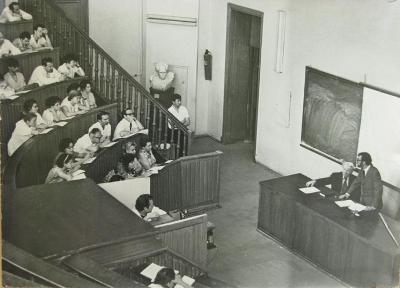Stories
The brain mechanisms of aggression
Motivational systems of social behavior
International Society for Research on Aggression
Behavior Genetics Association Ethics Committee
The World Wide
Runners Club
for Peace
United Nations University for Peace
Charlie Robbins, barefoot runner
* * *
Since I was a child, I have always considered myself as a scientist. Although it is many years since I have run my own laboratory, I continue to try to use the scientific method and to understand things scientifically. I appreciate the culture of science, although I often distinguish this from the particular institutions of science which are often co-opted by the culture of war, much as institutions of religion are co-opted.
The culture of science is a human enterprise, an invisible collective of people throughout the world and over many centuries who have worked together, consciously or unconsciously, to amass the knowledge that we call science. It is appropriate that the standard style for a scientific paper begins with an introduction referring to all those who have gone before and ends with a discussion that relates the new findings to those of the past. It is also appropriate that the methods section is supposed to provide instructions explicit enough that any scientist, anywhere in the world, should be able to repeat the same methods and obtain the "same" results, i.e. results that are within a statistically probable range.
As one would expect with such a culture, the best science is done in teams and the team process in science can be very enjoyable. Most scientific articles are multi-authored, reflecting the team approach, including most that I have published in The Aggression Systems. Among the most memorable teams for me are the Italian cardiovascular team, my teams in the Wesleyan "rat lab", and "David's Collective 1" and "David's Collective 2" in Soviet Georgia. I carried over this team approach to the work I did on the International Year for the Culture of Peace at UNESCO.
Thinking of the great scientists I have been privileged to know or to work with, such as John Flynn, Theodosius Dobzhansky, Giuseppe Moruzzi, John Paul Scott, Ben Ginsberg, and others, I consider it an honor to have been part of this culture, and I feel a responsibility to contribute to it. The following photo exemplifies this as I lecture in the hall where the great 19th Century Russian neurophysiologist Sechenov once gave his lectures, and along side another great Russian neuroscientist, Pyotr Anokhin.
There are many points in common between the culture of science and the culture of peace, as I wrote in a brief paper that I presented many years ago to a conference in Israel.
Certain of the points are worth repeating here. For example, "If science is used for destructive purposes or for the exploitation of some by others, it is not within the proper ethical framework to which it should be dedicated." In fact, this principle had a big impact on my life, as I explain elsewhere concerning the potential misuse of my work in genetics.
Another point concerns the free flow of information which is a fundamental characteristic of both a culture of peace and the culture of science. As I say, "Whenever there is secrecy or manipulation of information, it produces a distortion of the scientific system, which at best negates the value of the work done and at worst produces false starts and setbacks for the entire scientific community." This came to a head at UNESCO during the International Year as I explain in the page on science at UNESCO.
Science is not infallible or all-knowing. It has its limits. For example, science is statistical; it does not predict events with precision, but within a certain range of probability. Fortunately, in this regard, I came to appreciate and enjoy working with statistics. Another example, as I explain with regard to the scientific laws that I have discovered, even the best scientific laws break down at their extremes, and the exceptions are more interesting than the rule. Yet another example is the fact that science can only investigate the phenomena that it can repeat. But sometimes you see things that you cannot repeat, as I describe in the page on experiments I never did. This has come up as a serious matter in the most recent research I have been doing on the origins of the culture of war. The best hypothesis is that war was perpetuated in prehistory as a means of surviving deadly droughts and other such catastrophes. But this is not subject to observation, and so it cannot be proven scientifically.
More often than one imagines the culture of science is corrupted by jealousy, ambition or political manipulation. I have experienced this in several cases.
On the basis of my experience with work in genetics and science at UNESCO, as described above, I have come to the conclusion that the world is not ready for science. But this is paradoxical, which can be understood by coming back to the distinction between the culture of science and the institutions of science. On the one hand, the culture of science can help us develop a culture of peace. On the other hand, the institutions of science are often so co-opted by the culture of war that they are quite dangerous to our future.

With Pyotr Anokhin in the Sechenov Lecture hall
Click here for another photo with Anokhin
 |
Stages
1986-1992
Fall of Soviet Empire
1992-1997
UNESCO Culture of Peace Programme